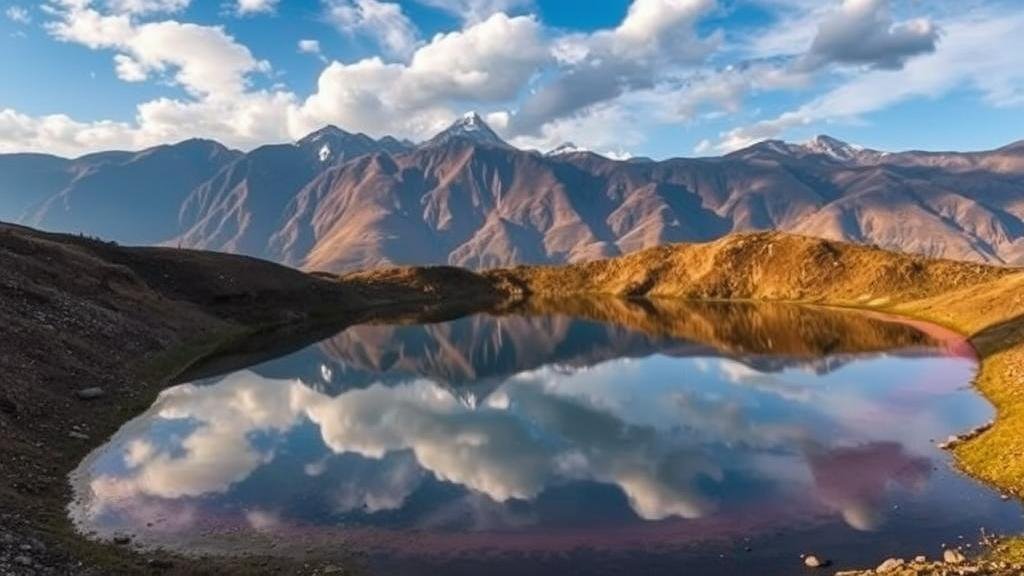Exploring the mysterious “Sky Lakes” in Nepal, where reflections are said to reveal hidden celestial paths.
Exploring the Mysterious Sky Lakes in Nepal
Nepal, a country etched with ethereal beauty, is home to several natural wonders, among which the Sky Lakes stand out for their enigmatic charm. These high-altitude lakes, often shrouded in legend, are revered not just for their stunning scenery but also for their purported ability to reflect hidden celestial paths. Located in the remote regions of the Himalayas, these lakes have become a focal point for adventurers, pilgrims, and researchers alike.
Understanding Sky Lakes
The term Sky Lakes refers to pristine bodies of water situated at altitudes often exceeding 4,000 meters. e lakes, such as the famed Gosaikunda, Rara, and Tilicho, are revered in both cultural and environmental contexts. Their elevations place them in areas with unique ecosystems and climatic conditions, which contribute to their mystique.
Celestial Reflections: Myths and Legends
Sky Lakes are steeped in local mythology, with tales often revolving around their reflections. Many believe that gazing into the waters can reveal a person’s fate or help decipher celestial pathways. For example, Gosaikunda, situated in the Langtang National Park, is a sacred lake among Hindus, believed to be created by Lord Shiva. According to local lore, the lakes reflection is said to capture the moons orbit, guiding pilgrims on their spiritual journeys.
Scientific Significance
Beyond their mythical significance, Sky Lakes also attract scientific interest due to their unique ecological systems. These high-altitude environments provide important insights into climate change, biodiversity, and hydrology. Studies have shown that lakes like Rara support endemic species, playing a vital role in maintaining local biodiversity.
- Rara Lake, the largest lake in Nepal, spans over 10.8 square kilometers and is home to various fish species.
- Tilicho Lake is known for being one of the highest lakes in the world, sitting at approximately 4,919 meters.
Visiting the Sky Lakes
Adventure tourism in Nepal has surged in recent years, with trekkers eager to experience the breathtaking vistas surrounding the Sky Lakes. Trekking routes to these lakes offer challenges for seasoned hikers and beginners alike. Numerous trekking agencies provide guided tours, ensuring that visitors can safely navigate the rugged terrain.
Real-World Applications
Visiting the Sky Lakes can serve various purposes beyond leisure, including:
- Scientific research on climate change and its effects on high-altitude ecosystems.
- Cultural studies focusing on local myths and traditions connected to these bodies of water.
- Ecotourism initiatives that promote sustainable travel and conservation efforts.
Addressing Common Concerns
Traveling to remote Sky Lakes often brings about concerns around accessibility and safety. Here are some common inquiries:
- How challenging is the trek? The difficulty varies; some trails are accessible for beginners while others cater to more experienced hikers.
- What should I prepare for? Altitude sickness is a concern, so proper acclimatization is essential. Physical training beforehand can also help.
Conclusion: A Journey Beyond the Ordinary
Nepals Sky Lakes are breathtaking marvels that invite exploration and contemplation. Whether you are drawn by the legends that surround these lakes or the desire to witness their natural beauty, visiting these celestial waters offers a unique experience that blends adventure, culture, and science. reflections on their surfaces may not only unveil hidden celestial paths but also lead you to understand the deeper connections between nature and humanity.
Actionable takeaway: If you’re planning a visit, consider joining an ecotourism group or reaching out to local guides. This not only enriches your experience but supports sustainable practices that safeguard these fragile ecosystems for future generations.


